Techniques for Capturing Images
Last updated on 2024-12-31 | Edit this page
Estimated time: 15 minutes
Overview
Questions
What methods are available for capturing spherical panorama images?
How do we set up the shooting scenarios?
Objectives
Explain how different techniques are available for spherical panorama photography
Cover camera setups for spherical panorama photography
Multiple-shot rotating (Pano Kit) DSLR camera
This technique uses a regular DSLR camera, a compact camera or a mobile phone, accompanied by rotating mechanism such as the Matterport for DSLR cameras or the Insta360 Flow for mobile phones.
Whichever device you use, the idea is to take interval-timed photographs, covering the whole 360 horizontal and vertical area.
For vertical coverage you will need:
a wide-angle lens in portrait mode for DSLR cameras
an adapter kit for mobile phones
if you are not using a wide-angle lens it will be necessary to shoot 4 more photographs at 90 degrees (or 3 at 60 degrees) tilted to the top and the bottom of the view
This is a general guideline for shooting with regular cameras. A good rule is to overlap the photos for at least 1/3 of each sequential image. However there are many different lenses for DSLR cameras and it is important to know their characteristics, especially the FOV’s(Field of View) settings.
The cost of the equipment is lower, but it takes more time to produce an image.

Spherical panorama camera/360 camera
This technique uses a camera with one or more fish-eye lenses such as the Insta360.
The cost of the equipment is higher, but it takes less time to produce an image.
Only one shot is necessary because the camera contains multiple camera to cover the 360 spherical spectrum.
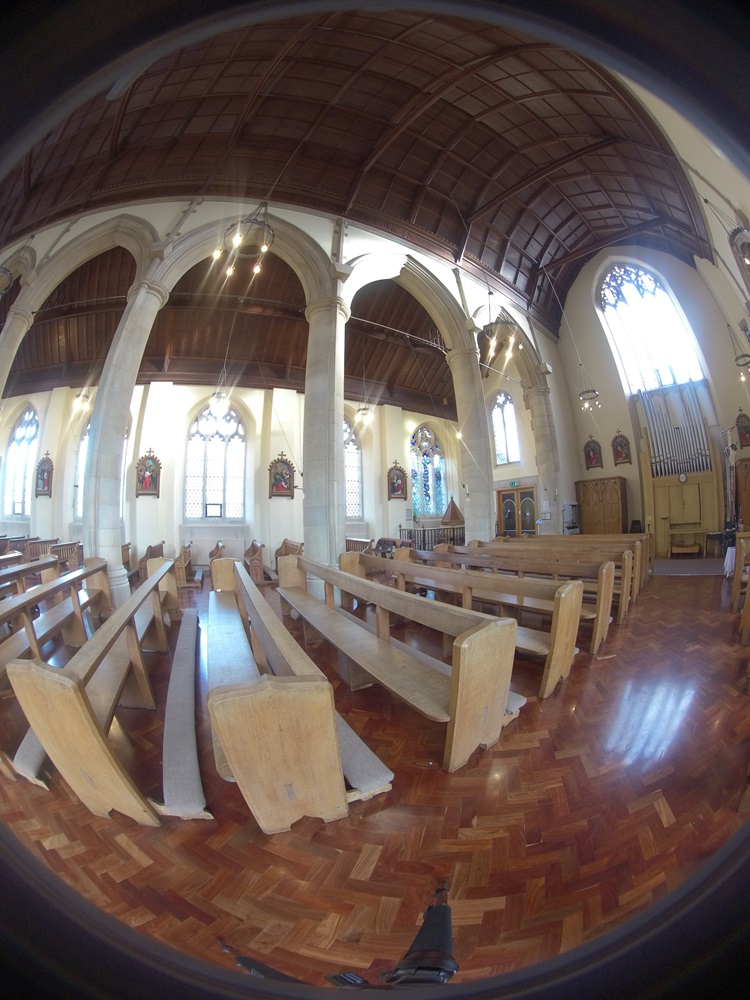 |
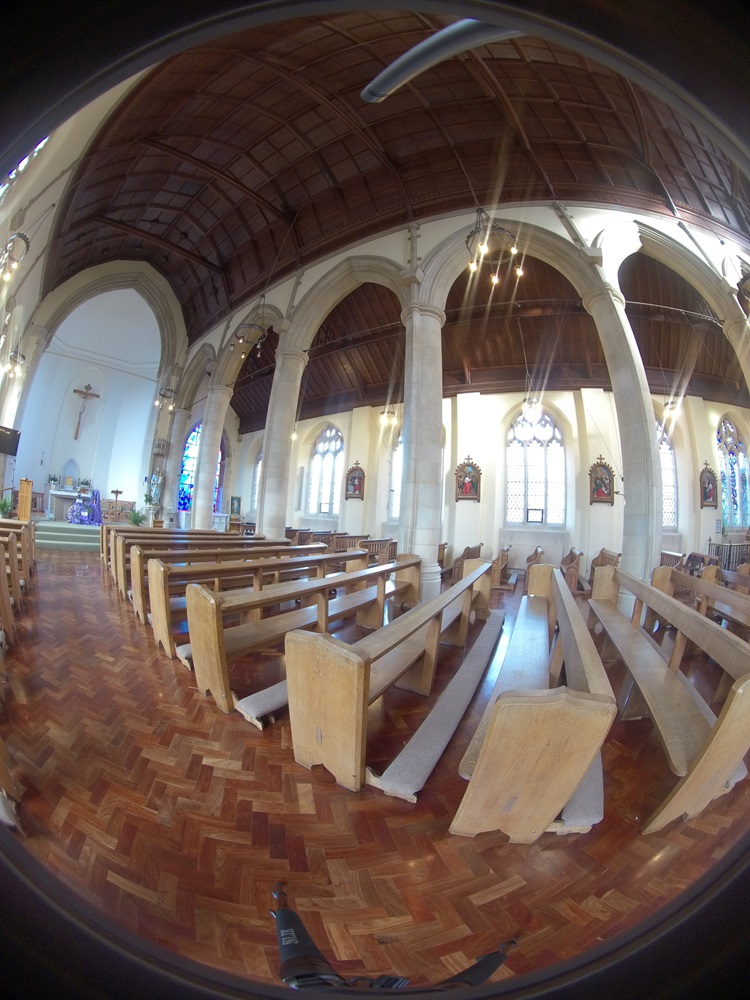 |
 |
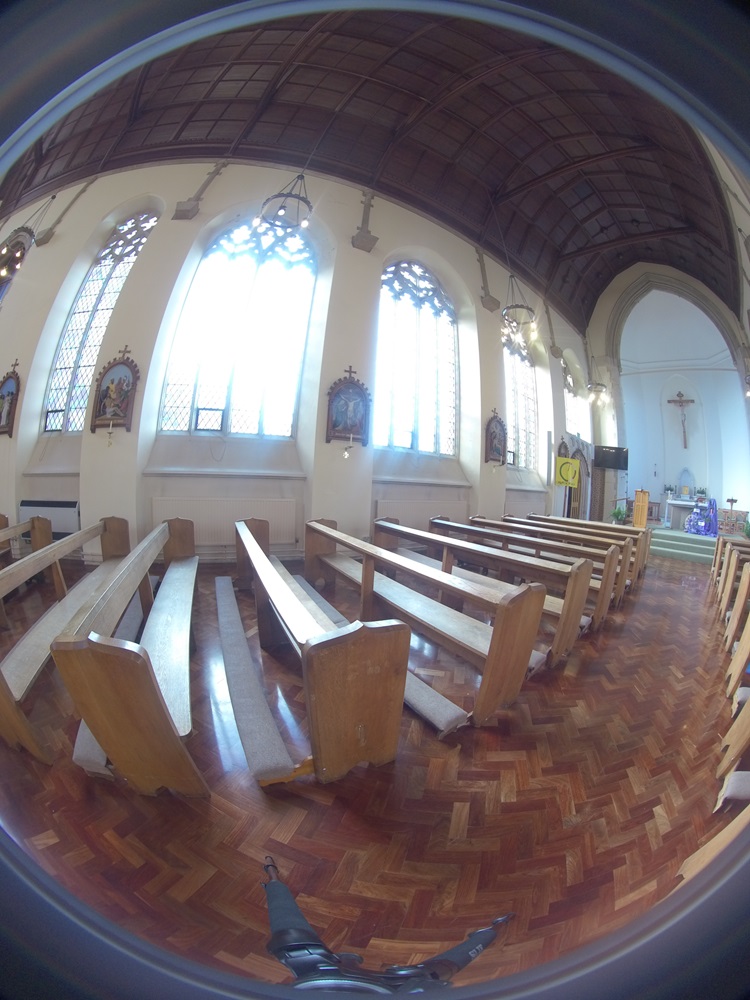 |
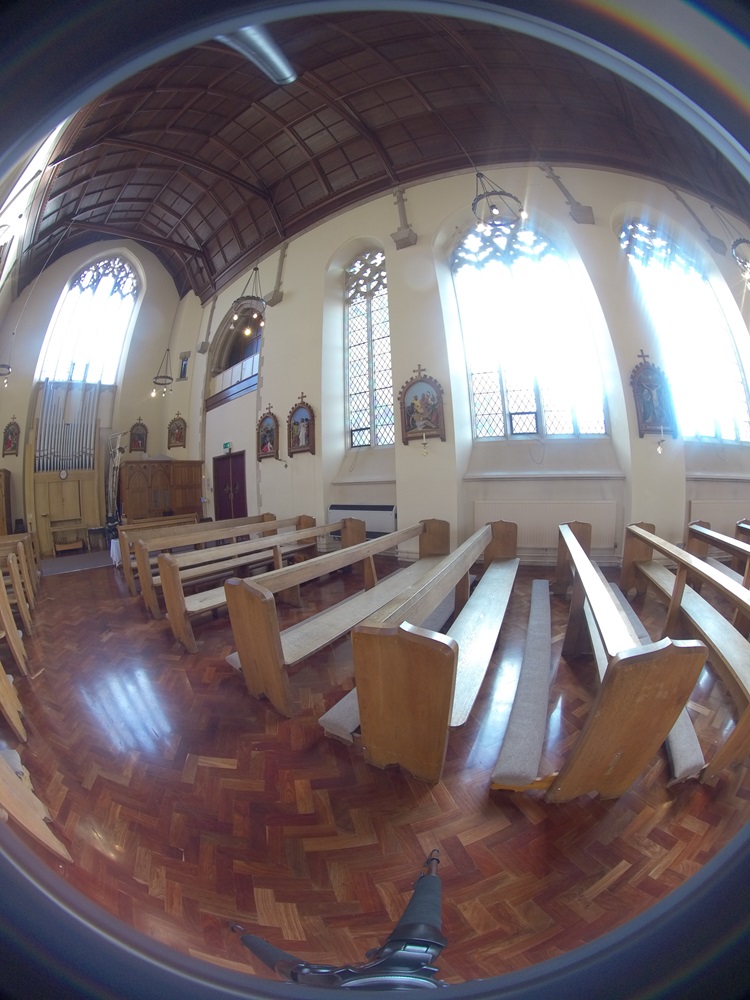 |
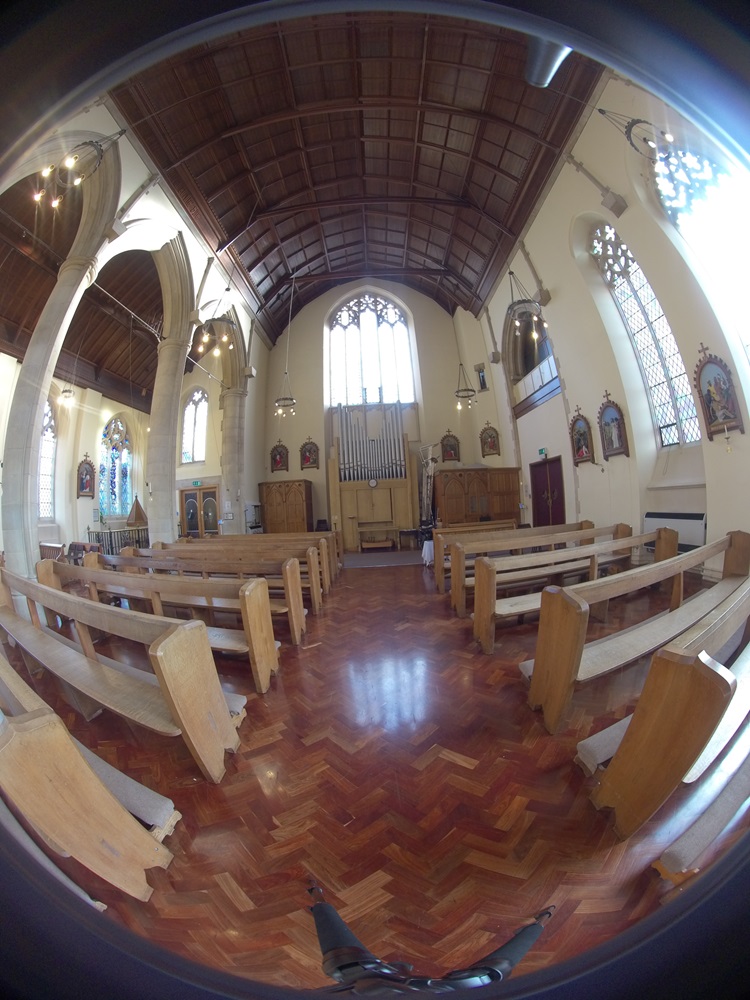 |
Spherical unprocessed photos of St Mary’s Roman Catholic Church Brighton (UK), DSVMC University of Brighton, under DSVMC


Below you can see a brief explanation about the differences in cost, quality and time for using one or the other technique.
What is the difference between a 360 Camera and an Asteroom Virtual Tour Kit?, under Asteroom, via YouTube.
